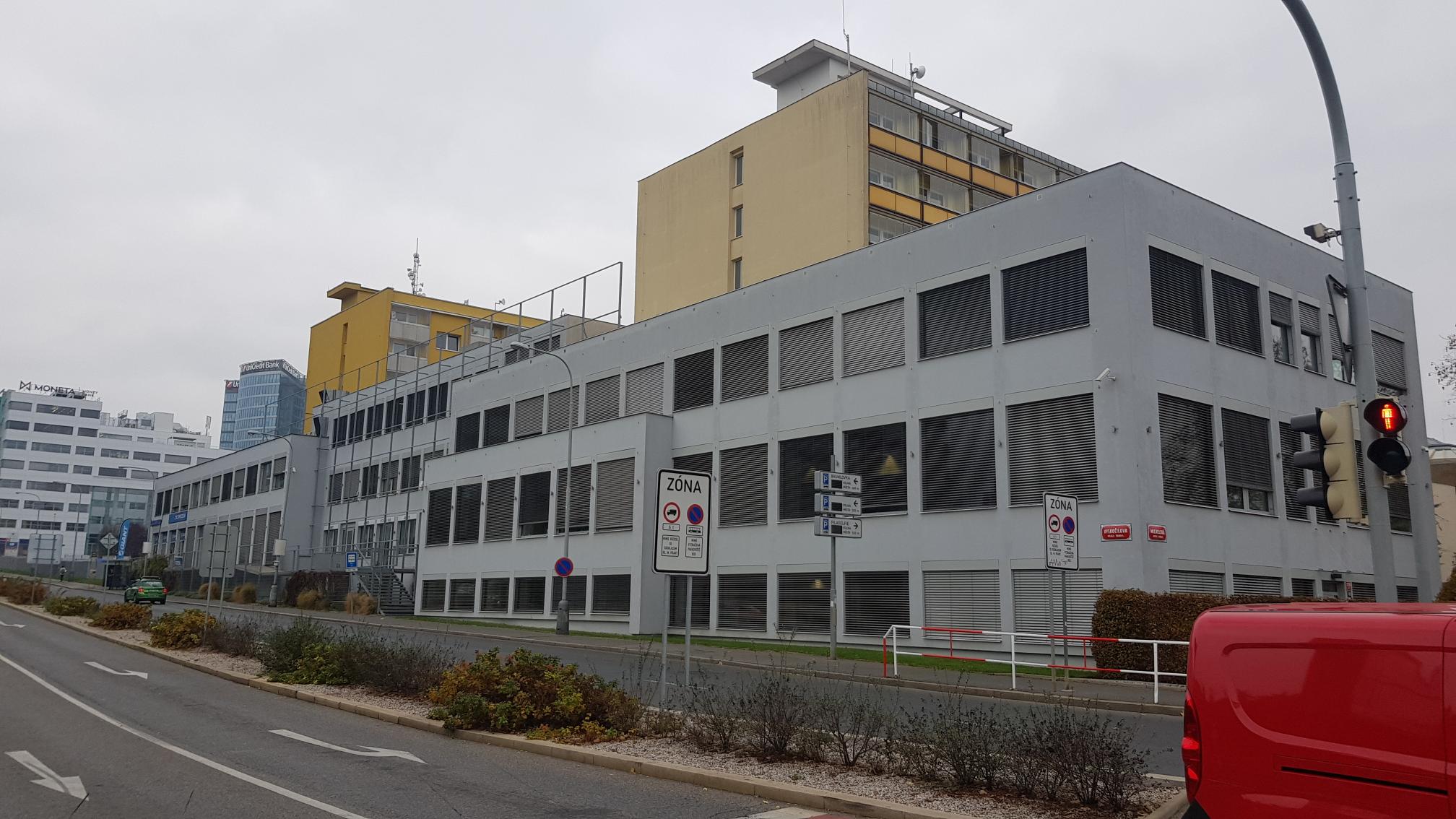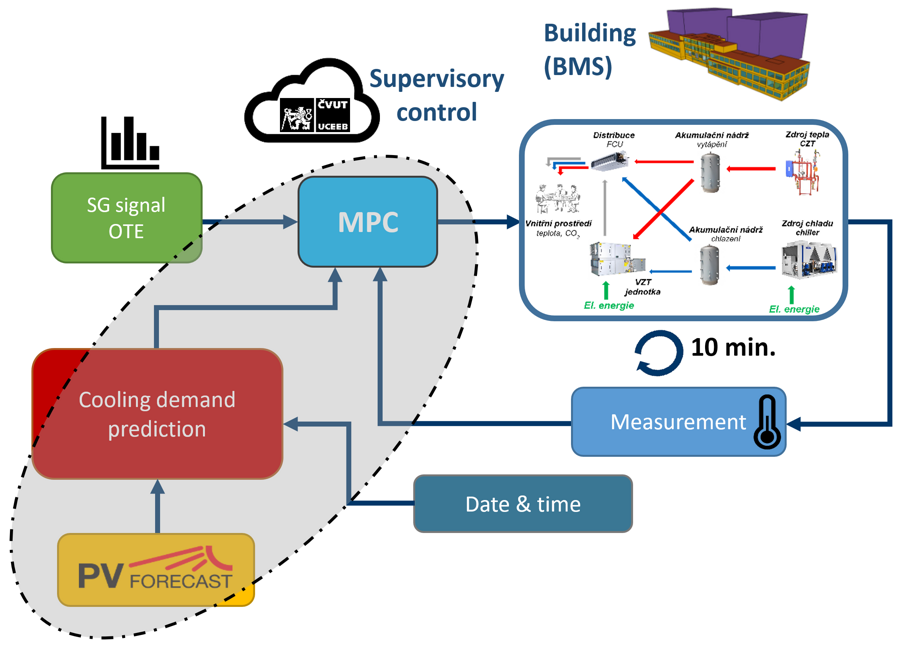

The University Centre for Energy Efficient Buildings, in cooperation with the Faculty of Mechanical Engineering of the Czech Technical University and Elpramo company, has successfully completed a three-year project Comfygrid, in which it developed and pilot tested software tools for optimal building demand response to smart grid requirements.
The main objective was to manage the building technology in such a way that, while fully preserving the user comfort, energy load is efficiently shifted to time windows when energy is cheaper. In addition, a Guideline for effective integration of buildings to the smart grid in the country was also developed. Preparations are now underway for a follow-up project, which should be more targeted at commercial deployment and application in the dynamically developing energy market.
In the first phase of the project, we first developed a software tool for remote connection to the Building management system (BMS) and control of selected technological equipment (HVAC). We first tested and tuned the software on digital twins (simulation models) of buildings and then on real buildings. Testing was carried out in the form of a so-called pilot-plant, i.e. during the normal operation of two buildings of different types.
First, a two-week testing was carried out on a residential building, where the space heating and domestic hot water preparation in a family house in Kladno-Kročehlavy were remotely controlled from the UCEEB cloud. The assessment showed that by predictive control and load shifting to cheaper time windows, energy costs can be reduced by approximately 15 % due to the large storage capacity.
Subsequently, almost three months of testing was carried out in the summer period from July to September, when remote control was deployed again, this time on an air handling and cooling unit (chiller) in an office building in Prague. The predictive control (MPC) of the operation of these facilities was based on solving an optimization problem that took into account the dynamic price signal from the OTE spot market, the prediction of cooling demand, as well as the forecast of outdoor temperature and solar irradiation.
After pilot-plant testing, the energy costs of both the chiller and the whole building were evaluated. A comparison with the same period last year showed the positive contribution of the deployed cloud algorithm, which was able to reduce the running costs of the chiller by about 8 % and of the whole building by about 3 %. At the same time, thanks to the continuous monitoring and feedback from the building users, it can be claimed that the user experience was not compromised in any way during the pilot-plant testing. Due to the fairly conservative algorithm settings, it can be estimated that the potential for cost reduction for individual chiller (heat pump) installations exceeds 10 %. For the building as a whole, it will be around 5 %. Of course, it all depends on the accumulation capabilities and the volatility of the dynamic tariff.
In addition to the testing, a Guideline for effective integration of buildings to the smart grid in the Czech Republic was also published at the end of the project. Now a follow-up project is being prepared, which should be more targeted at commercial deployment and application in the dynamically developing energy market. Therefore, the aim should be, among other things, aggregated testing on multiple buildings simultaneously forming an already larger consumption block, which brings more interesting possibilities in terms of providing and trading flexibility.
The project "Development of tools for optimal building demand response to smart grid requirements and their impact on the
energy market and the environment" under the auspices of the application guarantor MIT of the Czech Republic was supported
by the Technology Agency of the Czech Republic within the Theta programme.
